For those of you who are going to use RX MCU at the office, laboratory or for a club activity, and those who are planning to use it, today, I will introduce our Renesas RX MCUs web page and what to download at the start of development. I have also tried installing the latest RX development environment. You need only two steps to get ready.
First, please visit the ‘RX Family Development Environment’. As shown in Figure 1, you will need to install of the Integrated Development Environment (IDE) and compiler.
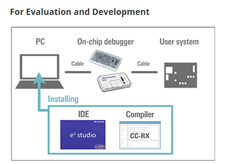
[Figure 1]
So let’s install it by following the below procedures. (Even if you don’t have a board yet, don’t worry. Installation, activation and build are available.)
Step 1. Scroll down the page ‘RX Family Development Environment’ to Figure 2. Click “Latest version” of Integrated Development Environment (IDE), e2 studio (pronounced e-square-studio), to download.
(You are requested to log in to My Renesas here. If you have not registered yet, please click ‘Register’ for registration.)
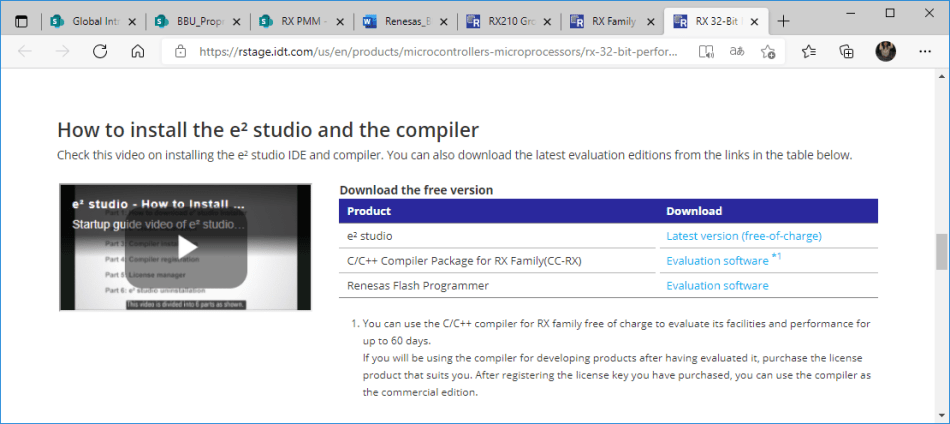
[Figure 2]
Step2. Unzip the downloaded file (Figure 3-1) and double-click on the .exe file (Figure 3-2) to install e2 studio.
You can also install free compilers by following the instructions.
[Figure 3-1]
[Figure 3-2]
That’s all! The development environment is ready.
After activating e2 studio, the message ‘Welcome to e2 studio’ is displayed (Figure 4). Click [Create a new C/C++ project] to create a new project (a code generation function Smart Configurator or a standard installed driver (RDP) will support your software development!) or click [Import existing projects] to import a project such as a downloaded sample software from Renesas web page or a copied project from your senior at work/lab, then you can start the development.
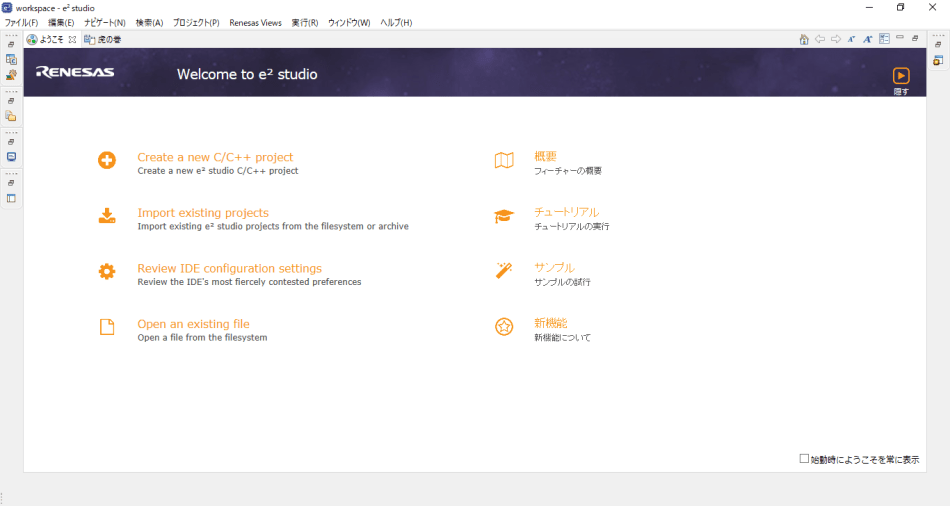
[Figure 4]
As an example, I’m showing you how to import and change the sample code for the ‘Target Board for RX231 LED Blink Control Program’, which is pre-installed on the RX231 target board.
- Download ‘RX231 Group Target Board for RX231 LED Blink Control Program - Sample Code’ from the Target Board for RX231 web page. And, unzip the file. (You are requested to log in to My Renesas again.)
- From here on, refer to the ‘3.3 Import existing Projects into Workspace’ of ‘Integrated Development Environment e2 studio 2020-04, e2 studio v7.8 User’s Manual: Getting Started Guide’ (hereafter Getting Started Guide). Click [Import existing project] on the screen as Figure 4, then you can see the status as 3.3.4 of the Getting Started Guide shows. Follow the instructions of the Guide until 3.3.9 to complete importing.
This sample software is a program that turns LED0 and LED1 on and off alternately on the RX231 Target Board. Under the default settings, it operates like this: both LEDs are turned off → turn on LED1 → turn on LED0…. Let’s change it reversely like this: both LEDs are turned off → turn on LED0 → turn on LED1.
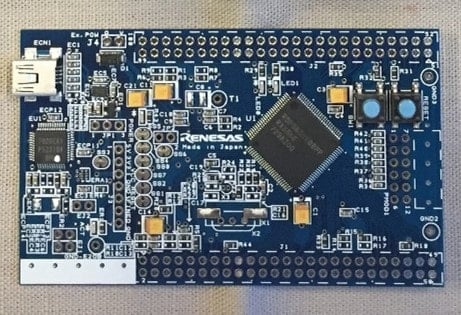

Change lines 66 and 67 of “r_cg_icu_user.c” and ”r_cg_cmt_user.c” as shown below.
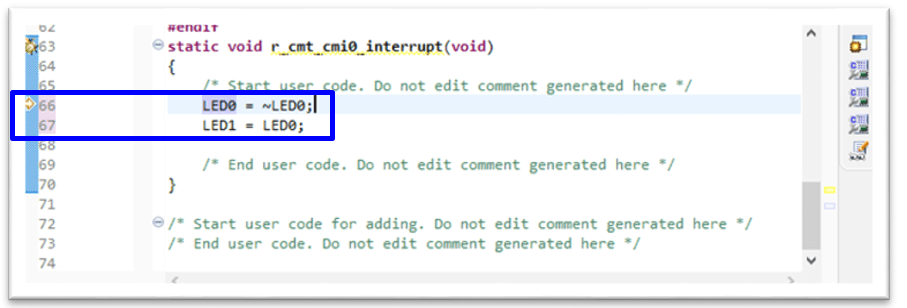
Click [File]→[Save] to save the file.
Click the hammer icon just below [File] to build.
If you have an RX231 Target board, please try to connect to a PC with a USB cable and run the software.
It is longer than I expected. From here on, it is some extra information.
For details about the RX Family Development Environment, visit here. It offers development tools, boards and kits, software, and useful information such as a list of MCU manuals.
Lastly, these are blogs introducing the e2 studio library and plug-in which are helpful for your software development and debugging.
Easy Azure IoT connection! RX65N 32-bit MCU supports Azure RTOS
POC Development Using a GUI in 10 Minutes - Introducing the New Functions of the Newly Released QE for Display (RX)
Meeting the Needs of the New Normal with the RX HMI Solutions
